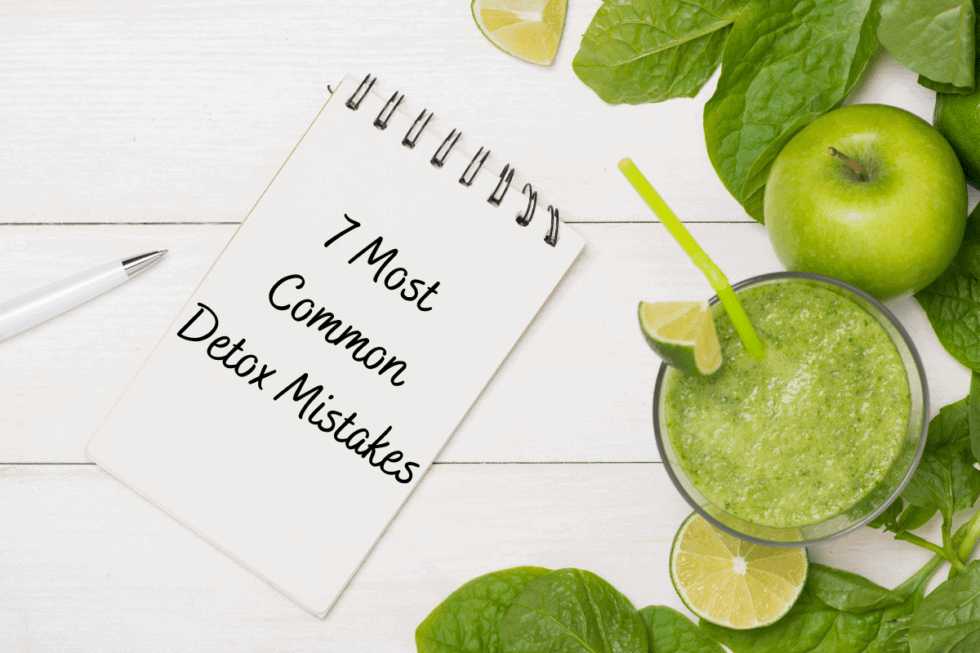
7 Most Common Detox Mistakes Made by Sensitive People – What to Know When You Have Mast Cell Activation Syndrome and Histamine Intolerance
I felt like I was crawling out of my skin.
And I had excruciating, burning pain throughout my body (and even worse…it included my nether regions – very sensitive!) For a solid week I truly wanted to die. It was honestly that bad.
This is what can happen when you make big detox mistakes like I did.
And this is why I’m so passionate about precision detoxification, especially for sensitive people with Mast Cell Activation Syndrome and Histamine Intolerance.
I made so many other detox mistakes along the way, too. And they all made me really sick.
Trying to detox metals before mold toxins was what set off the excruciating burning pain throughout my body.
High dose glutathione caused me to flare horribly with insomnia, depression, and inflammation. (Now I know the right way to use glutathione.)
I was also told to try infrared sauna. But I didn’t have any binders on board. That backfired, too.
The list goes on and on…
Detoxing is so important for people like us. But it is one of the least understood topics out there, especially for those of us with sensitivities.
Eventually, I found out that in addition to the heavy metal toxicity and Lyme, I also had mold toxicity.
My healing took off when I started to address mold toxicity correctly and figured out how to avoid those serious detoxing mistakes.

If you struggle with Mold Toxicity and Mast Cell Activation Syndrome, one of the most important steps in your healing is to remove the mold toxins.
You may not even know that you have Mold Toxicity. But when nothing seems to work long-term for your Mast Cell and Histamine health issues, Mold Toxicity may very well be the culprit.
When you have a lot of Mast Cell issues and sensitivities, though, you have to detox from mold the right way.
Otherwise, you can have major setbacks in your healing journey.
That’s what I want to help you with in this article. You’ll be learning about the 7 most common mycotoxin detoxification mistakes I see happening for people with Mast Cell Activation Syndrome and Histamine Intolerance.
But first off, what is detoxification anyway?
What Is Detoxification? What to know for those with Mast Cell Activation Syndrome and Histamine Intolerance
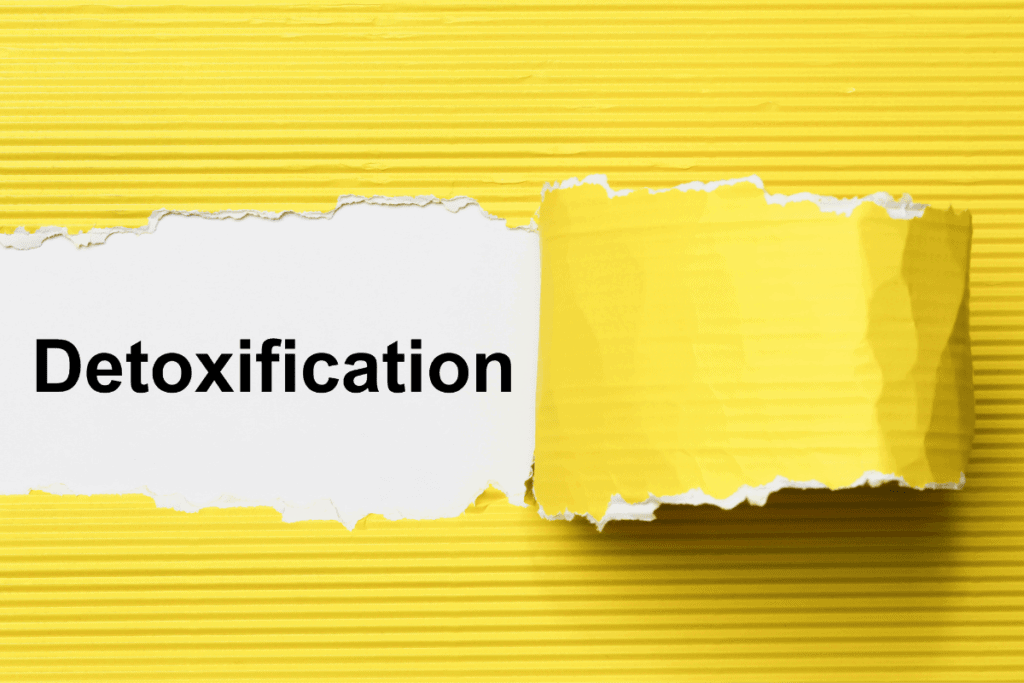
Detoxification means all the different ways your body eliminates toxins and wastes from your body.
These toxins could occur naturally in your body or come from outside your body. For example, your body naturally makes ammonia.
That ammonia has to be detoxified.
Medications, hormones, and chemicals have to be detoxed, too.
Unfortunately, we’re constantly exposed to more and more toxins. Some of the nastiest ones are mold toxins. And they need to be detoxed, too.
Your body has different ways to detox through 5 organs.
Your detoxification or elimination organs include:
- Liver, chemically changes toxic substances to make them less toxic and more water-soluble so they can be excreted via your urine and stool
- Kidneys, filters the blood and removes wastes through your urine
- Intestines, eliminates wastes through feces
- Skin, eliminates wastes through sweat
- Lungs, eliminates wastes through exhalation
These 5 organs are all very important for detoxifying.
These organs in your body work to detox your system. But your organs can only handle a certain amount of toxins at one time. This is called your toxin load.
If your detoxification organs can keep up with the toxins you have, your toxin load will be low. As a result, you will feel healthy and energized.
But, when your detox organs can’t keep up with your toxin load, the toxins build up.
If your toxin load is more than what your body can detoxify, it can make you sick.
The modern lifestyle exposes you to hundreds of chemicals at a time. So, most people already have a high toxin load from living normally.
In a study by the Environmental Working Group, tests found over 200 chemicals in newborns. That means they are even being passed from mother to child.
Chemicals such as drug residues, mold toxins and pesticides can be found in:
- Drinking water
- Air
- Food
- Medications
- Some supplements
- Skincare products and makeup
- Home care and cleaning products
Our detoxification system is not built to detox hundreds of synthetic chemicals all at the same time. And this certainly reduces how much our bodies can handle mold toxins.
I often recommend clients check for toxic chemicals. And many have shown high levels of chemical toxins.
So, if your toxic load is high, you are in a toxic state. This toxic state can lead to issues like fatigue, brain fog, and achiness.
Here are just a few more symptoms you might have when your toxin load gets high:
- Mast cell flares
- Histamine Intolerance
- Fatigue
- Muscle and joint aches/pain
- Skin problems
- Brain fog
- Constipation or diarrhea
- Abdominal discomfort
- Unable to absorb nutrients
- Weight gain or weight loss
- Supplement and meds sensitivities
- Food sensitivities
- Chemical sensitivities
- Light/sound sensitivities
And unfortunately, if you have been exposed to mold, it might be further hindering the detox process.
People with Mast Cell Activation Syndrome and Mold Toxicity typically have a lot of toxins in their bodies.
We’ll look at that next.
How Does Mold Prevent You From Detoxing Other Toxins? What to know if you have Mast Cell Activation Syndrome or Histamine Intolerance
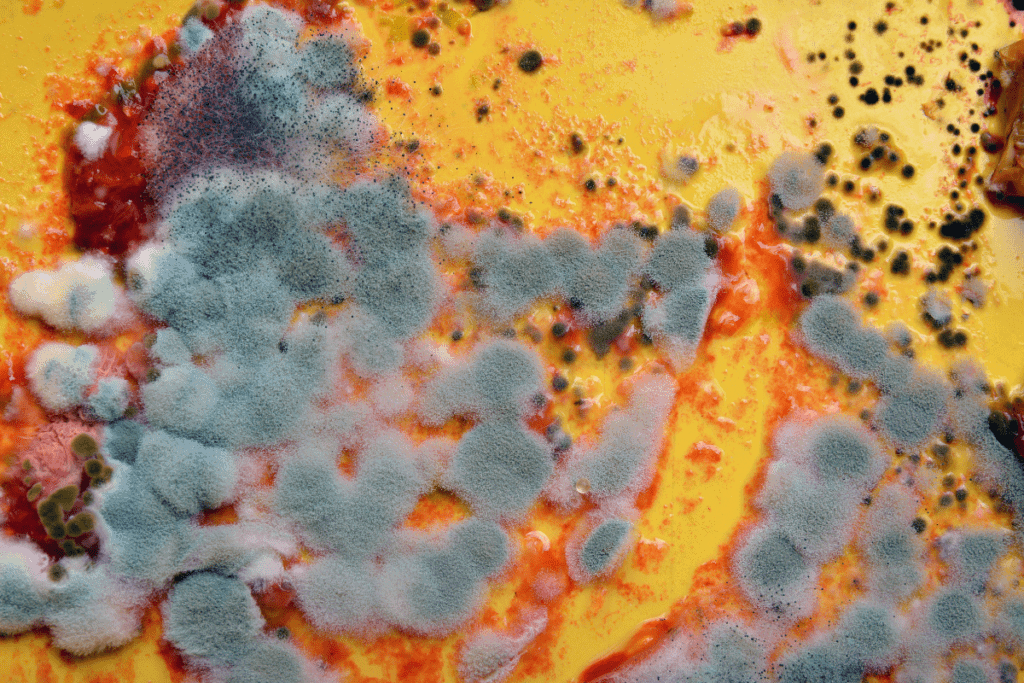
So exposure to all those chemicals we just talked about is bad enough.
But mold toxins are often like a complete traffic jam for your detox pathways.
And more and more people are exposed to toxic levels of mold nowadays. This is due to a few factors.
New building codes reduce air circulation and increase humidity. This makes it much easier for toxic mold to grow.
And where there is mold, there are mold toxins. Sometimes very high levels.
Mold toxins have a specific name. They’re called mycotoxins.
And these mycotoxins can make people very ill.
Mycotoxins trigger mast cells.
As a result, more and more people are developing Mast Cell Activation Syndrome from the high levels of Mycotoxins we’re now facing.
In fact, the #1 root trigger I’ve seen in my practice is Mold Toxicity. Now, I recommend every client in my practice check for mold toxins.
Mold can cause issues with Histamine Intolerance, too.
So, one of the first keys to addressing Mast Cell Activation Syndrome is to lower the toxic load and aid your body to safely remove the mold toxins.
In just a bit, we’ll talk about some common mistakes people make when detoxing mold. But first, let’s briefly look at the 3 phases of detox.
This will give you some basic background information that will be helpful to understand how to detox more safely and effectively.
The 3 Phases of Liver Detoxification Needed in Mold Detox – What to know for those with Mast Cell Activation Syndrome
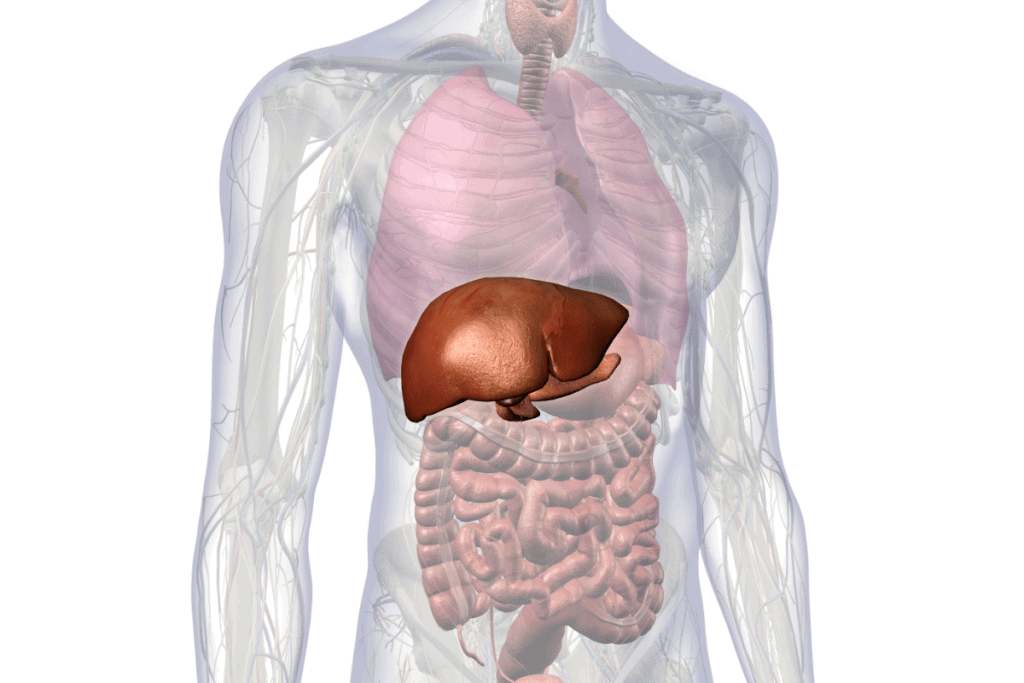
There are 3 phases of detoxification that happen in the liver. All 3 phases are very important in mold detox.
But, many people with Mast Cell Activation Syndrome have trouble with detox protocols. Especially when they’re dealing with sensitivities.
Most mold detox mistakes happen when some phases of detoxification are not correctly supported. So, before we go into common mold detox mistakes, let’s cover these important 3 phases of Mold Toxin detoxification.
Phase 1 and 2 happen in the liver. Phase 3 is where the toxins move from the liver through the bile in the gallbladder or the bloodstream and out of the body.
Let’s look at each of these phases in a little more detail.
In Phase I, the liver makes the toxins more water-soluble. Mold toxins are fat-soluble and stored in tissues to keep them tucked away. This makes them less damaging to the body than if they were in the bloodstream.
But, they need to be made water-soluble for your body to be able to get rid of them.
There’s a slight problem, though. Making them more water-soluble creates a lot of damaging free radicals. And the water-soluble versions of these toxins can be even worse than the fat-soluble versions.
This is where Phase 2 comes in to save the day. It helps with these toxic “intermediate” mold toxins.
In Phase 2, the liver makes these intermediate mold toxins even less harmful through something called conjugation. This simply means a type of compound is attached to a toxin to “package it up” for safe removal.
There are 6 different types of Phase 2 conjugation. The most commonly known ones are glutathione conjugation and glucuronidation conjugation.
These put different types of “packaging” onto the mold toxins.
Then, after phases 1 and 2, the packaged up water-soluble toxins are typically ready to go on to Phase 3.
Phase 3 is where the packaged-up toxins move out of your liver. But where do they go?
They can then go into your bloodstream or through your gallbladder with bile.
The toxins in your bloodstream get filtered through your kidneys and sent out of your body with the urine. The toxins in your bile get dumped into your intestines and sent out with the stool.
Phases 1, 2, and 3 need to work together smoothly for you to be healthy. But, sometimes these 3 phases aren’t working optimally.
And mold toxins can make it so these 3 Phases of detoxification get more impaired over time.
Mold toxins can clog up these pathways. And they can use up important detox enzymes. This then means that your body has less ability to detox all the other things in your body.
This can become a downward spiral with mold. You can’t detox mold because your detox pathways continue to worse over time. The reason they continue to worsen is because mold is using up the detox enzymes.
And this can lead to many other problems.
For example, having a high toxin load that requires phase 2 can make some people sensitive to certain medications and supplements (for example, vitamin D, melatonin, and quercetin).
Salicylate sensitivities sometimes develop, too, in part because of this.
This is all because most medications, some supplements, and salicylates also have to go through these 3 Phases as well.
This explains why about 20 – 25% of our clients have trouble with salicylates.
To make matters worse, this can all lead to Nervous System dysregulation and increased problems for people with Mast Cell Activation Syndrome and Histamine Intolerance.
Related Post: The Gupta Program: Review for Chronic Conditions
Now that you’ve learned about the stages of detoxification, we’re going to look at binders.
What Are Binders? – What to know for those with Mast Cell Activation Syndrome
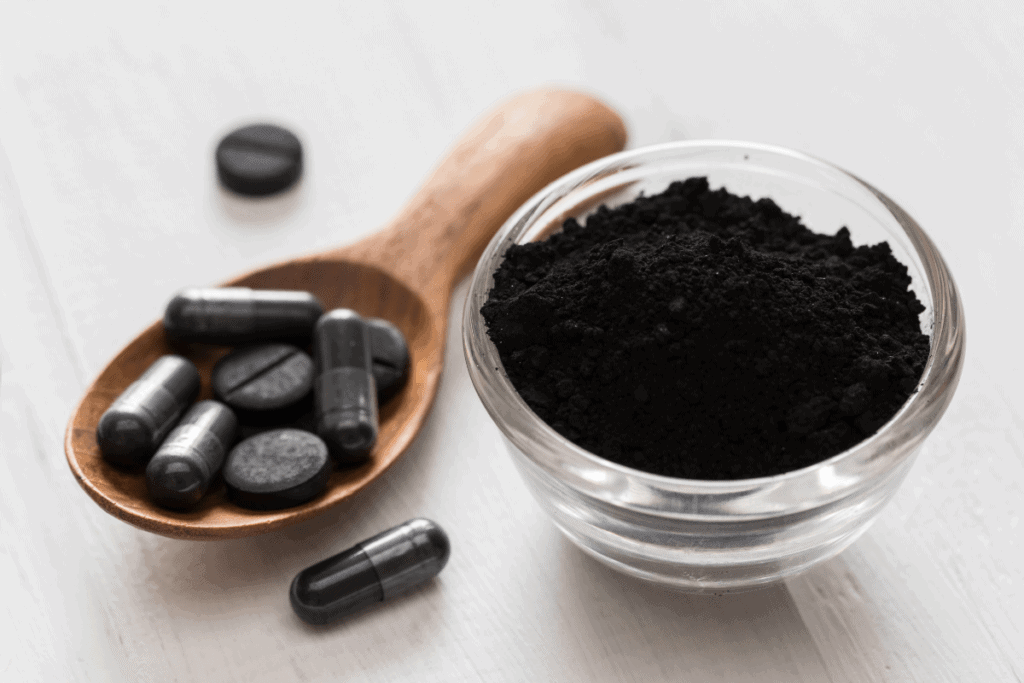
Binders are substances that can help remove toxins from your body. Binders have been safely used by people for a very long time.
Common binders are things like: activated charcoal, clay, chlorella, and even certain probiotics.
If you have Mold Toxicity, you’ll have mold toxins in your gut and bloodstream. The binders help mop up these toxins to help them get excreted in stool more easily.
Binders don’t completely bind to toxins though. They work more like static cling. They “cling” to the toxins rather than getting permanently stuck to them.
This means the toxins can sometimes “fall off” of binders, too. When this happens, those toxins can easily cross the intestinal wall into the bloodstream.
Then the toxins are circulating again, which can make you free really ill.
Keep in mind that binders can also pull some toxins out of the tissues.
This information will be helpful as we talk about mold detoxification mistakes.
Now let’s look at the most common mistakes I see with mold detoxification and how to avoid them.
7 Most Common Mold Detoxification Mistakes and What To Try Instead – What to know for those with Mast Cell Activation Syndrome and Histamine Intolerance

It’s important you know that this blog post is for informational and educational purposes. It’s not meant to treat any health condition or to be prescriptive for anyone. Always be sure to work with your healthcare practitioner.
To safely detox from anything, your body needs to be ready for it.
This means:
- Your immune and nervous systems are calm enough to tolerate a gentle detox.
- You’re able to eliminate toxins through urine and stool.
- You have binders onboard ready to remove the toxins.
- All 3 phases of detoxification are supported in the right order.
It may seem like you would want to work on Phase 1 first. But this can backfire.
Supporting detoxification generally happens in reverse order.
Generally, we tend to support detoxification in this order:
- Support elimination.
- Add binders.
- Support Phase 3
- Support Phase 2
- Support Phase 1, if needed
But, I see a lot of sensitive people with Mast Cell issues who are doing all kinds of things that cause their toxin load to buildup in their bodies. This is usually because detoxification isn’t being supported in the right ways.
I want to make sure you’re aware of the most common detox mistakes I see.
For sensitive people dealing with Mast Cell or Histamine issues, these mistakes can set them back weeks or even months.
But, by avoiding these mistakes, mold detoxification can go much more smoothly.
Mistake #1 Taking binders while you are constipated
Constipation is often considered as not having at least 1, easy to pass, daily bowel movement. This is a fairly common problem in most of the people I work with.
If you are constipated, mold toxins can get reabsorbed through your intestinal wall into the bloodstream.
If this happens, the toxins will be circulating in the blood stream. And this can make you feel terrible.
Some binders can increase constipation. So, it’s important to NOT introduce binders until you are having an easy-to-pass bowel movement every day.
Instead: Look at addressing constipation until you have at least one easy-to-pass bowel movement every day before introducing binders.
Mistake #2 Not using precision binders or using a generic combination of binders
Mold toxins come in all kinds of different shapes. On a microscopic level, no two mold toxins are shaped alike.
And binders work by attaching to certain areas on the mold toxins. This is why some binders work better on certain mold toxins than others.
For example, the research literature shows the following binders are more effective for ochratoxins:
- Activated charcoal
- Welchol (or Cholestyramine) – Rx binders
- Propolmannan fiber
- Zeolite
Whereas, studies show these binders work better for Gliotoxin:
- Bentonite clay
- Propolmannan fiber
- Saccharomyces boulardii (a type of probiotic)
As you can see, the same binders won’t work for both these mold toxins.
If you have both ochratoxins and gliotoxin, only using charcoal won’t fully remove the mycotoxins from your system. Or just using a single combination binder usually won’t work well.
This is because specific binders work best for different mycotoxins. And the research literature on mycotoxin binders shows using targeted binders like this usually works better.
This is why it’s so important to check your body for which Mold Toxins you’re dealing with. When you know which mold toxins you’re dealing with, you can use the right, targeted binders..
Finally, some binders like bentonite clay, zeolite, and chlorella can be loaded with toxic metals. This is why you want to use the best, clean brands.
Instead: Check for which mold toxins you’re dealing with. Then consider which are appropriate binders for each one present. And be sure to use clean brands!
Mistake #3 Starting binders too aggressively
I’ve seen people get into trouble with starting too many binders at once. Or with trying binders in amounts that are too high for their bodies.
This can set off a lot of reactions and sometimes even worsen sensitivities.
Remember how you learned earlier that binders don’t bind things completely? That they work more like static cling and that toxins can also drop off?
And that binders can draw toxins out of tissues as well?
That’s important here. See, when binders are introduced too fast, they can pull toxins out of your tissues too fast, too. Or toxins can drop off the binders. This can:
- Overwhelm your body’s toxic load limits
- Bog down your detoxification system
- Set off even more mast cell reactions
Instead: Introduce one binder at a time. If you have sensitivities or a high toxin load, start with very small doses. I usually say “just 1-2 drops or a couple sprinkles.”
Mistake #4 Taking antibiotics and antifungals without having binders onboard first
I’ve seen many people try to start a detox program by taking antifungals first.
But this can go wrong very quickly for sensitive people.
This is because when mold is killed off, it releases even more toxins as it’s dying. This is called “die-off”
These die-off toxins can add to an already high toxin load… and greatly increase Mast Cell Activation.
Sadly, with Mast Cell Activation Syndrome, these types of mast cell reactions can last days or months, so it is never a good idea to push through these “die-off” symptoms.
If you struggle with Mold Toxins, most likely your body is not ready for the onslaught of toxins.
Instead: Consider adding antifungals last, AFTER you’ve supported elimination and added binders.
Mistake #5 Introducing high amounts of glutathione
Glutathione is a special detoxifier in your body. It works in both Phase 1 and Phase 2 detox.
Glutathione can speed up Phase 1 detox. This can pull a lot of toxins out of the tissues (mold and other types of toxins).
Remember that those intermediate toxins can be even more toxic.
So, if your Phase 2 detox pathways aren’t working great, this can really build up too many toxins too quickly. And you can start to feel sick.
One of the things that really surprised me in the research I’ve done on mold detoxification is that glutathione isn’t a great Phase 2 support for most mold toxins.
In fact, it’s another pathway – glucuronidation – that is the main pathway for getting rid of Mold Toxins in Phase 2.
This is the Phase 2 pathway that most people with Mold Toxicity need support with.
Plus, glutathione has the potential pull a ton of Mold Toxins from tissues with Phase 1 into the more toxic intermediate state.
So those toxins can get stuck in that more toxic state. Especially is Phase 2 is sluggish and can’t process the intermediates released in Phase 1.
Instead: Be very gentle and slow if you use glutathione in a Mold Detox. It’s not always necessary or the most helpful support.
Mistake #6 Using infrared saunas and coffee enemas without using binders
Both coffee enemas and saunas can pull mold toxins from your tissues as well. This can work well for some people. But, these are very powerful.
I’ve seen people try these methods without binders on board to help mop up those toxins. And many times this can backfire.
It can be much better to have binders onboard first before pushing things like sauna or coffee enemas.
A lot of saunas are also high in EMFs. So you have to be careful which you choose.
And many people with Mast Cell Activation Syndrome and Histamine Intolerance don’t tolerate sauna early on if they’re heat sensitive.
Similarly, coffee enemas can release too many toxins too quickly. Particularly if you do this too early in the detox process.
If your body is not ready for these toxin releases from sauna or coffee enemas, you may experience a lot of mast cell activation.
It’s not that these are bad methods. They really help a lot of people. But if you’re sensitive and have Mast Cell issues, it can backfire if started at the wrong time.
Instead: Get binders onboard before pulling toxins from the tissues. If you use them, start very slowly with infrared saunas and coffee enemas. Only use these at the right time and once your body is ready.
Related Article: Are Coffee Enemas Safe for Mast Cell Activation Syndrome?
Mistake #7 Trying to get rid of metals, Lyme, or SIBO before Mold
Mold Toxicity causes all kinds of changes in our bodies. This actually triggers something called Cell Danger Response. This is where your body goes into all kinds of protective modes to help you survive.
One of the things that happens in Cell Danger Response is that your body can start to tuck metals away in tissues. This keeps them more safely stored.
Metals are one of the harshest things to detox. And I’ve seen a number of people become bedridden from trying to detox metals too early.
Another thing that happens in Mold Toxicity is the immune balance can shift to where it’s very hard to fight off pathogens. And this can make it hard to get rid of bacteria, viruses, and even Candida that are out of control.
So, as you might imagine, it can be quite challenging in Mold Toxicity to get rid of Lyme, SIBO, or viral loads.
And many times the protocols only help for short amounts of time or don’t work when Mold Toxicity is underlying everything.
But, when Mold Toxicity is fully addressed, people often tolerate what they need to do to get rid of things like Lyme and SIBO.
Instead: Always work with your healthcare practitioner. If possible, you may find that it works better for you to address Mold before these other factors.
Conclusion – Mold Detoxification Mistakes – What to Know for those with Mast Cell Activation Syndrome and Histamine Intolerance

In my experience, Mold Toxicity is one of the biggest root triggers for people with Mast Cell Activation Syndrome.
In fact, over 90% of people I’ve worked with have had some level of mold toxicity. Removing mold toxins was a game changer for me and has been for most of my clients, as well.
However, if you are very sensitive and dealing with Mast Cell Activation Syndrome, mold detox can be full of pitfalls and minefields.
Therefore, it is critical to know which Mold Toxins you’re dealing with. And step through a gentle, precision mold detoxification in the right order, in the right way.
This is why I created the MC360 Precision Mold Master Class.
The course covers what you need to know to safely detox from mold without triggering mast cell reactions.
You can learn more by clicking the button below!
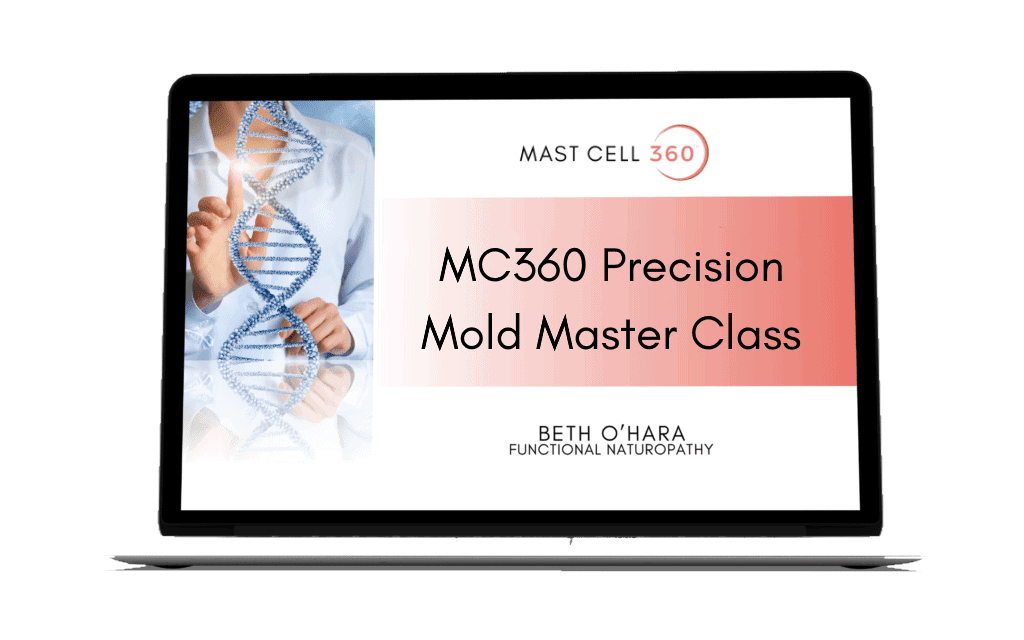
Buy the MC360 Mold Master Class!
References on Mold Detoxification – What to know for those with Mast Cell Activation Syndrome and Histamine Intolerance
Bankova, L. G. et al. (2016). The leukotriene E4 receptor, GPR99 mediates mast cell-dependent mucosal responses to the mold allergen, alternaria alternata. Journal of Allergy and Clinical Immunology. 137(2).
Bennett, J. W., & Klich, M. (2003). Mycotoxins. Clinical microbiology reviews, 16(3), 497–516. https://doi.org/10.1128/cmr.16.3.497-516.2003
Conti, P., Tettamanti, L., Mastrangelo, F., Ronconi, G., Frydas, I., Kritas, S. K., Caraffa, A., & Pandolfi, F. (2018). Impact of Fungi on Immune Responses. Clinical Therapeutics, 40(6), 885–888. https://doi.org/10.1016/j.clinthera.2018.04.010
Fricke, R. F., & Jorge, J. (1990). Assessment of efficacy of activated charcoal for treatment of acute T-2 toxin poisoning. Journal of toxicology. Clinical toxicology, 28(4), 421–431. https://doi.org/10.3109/15563659009038585
Galtier, P. (1999). Biotransformation and Fate of Mycotoxins. Toxin Reviews, 18(3), 295–312. doi: 10.3109/15569549909162648
Goodman, S. (2009). Tests Find More Than 200 Chemicals in Newborn Umbilical Cord Blood. Scientific American. Retrieved 12 July 2021 from
https://www.scientificamerican.com/article/newborn-babies-chemicals-exposure-bpa/
Haque, M. A., Wang, Y., Shen, Z., Li, X., Saleemi, M. K., & He, C. (2020). Mycotoxin contamination and control strategy in human, domestic animal and poultry: A review. Microbial pathogenesis, 142, 104095. Advance online publication. https://doi.org/10.1016/j.micpath.2020.104095
He, J., Zhou, T., Young, J. C., Boland, G. J., & Scott, P. M. (2010). Chemical and biological transformations for detoxification of trichothecene mycotoxins in human and animal food chains: a review. Trends in Food Science & Technology, 21(2), 67–76. doi:10.1016/j.tifs.2009.08.002
Hooper, D. G., Bolton, V. E., Guilford, F. T., & Straus, D. C. (2009). Mycotoxin detection in human samples from People exposed to environmental molds. International journal of molecular sciences, 10(4), 1465–1475. https://doi.org/10.3390/ijms10041465
Jancova, P., Anzenbacher, P., & Anzenbacherova, E. (2010). Phase II Drug Metabolizing Enzymes. Biomedical Papers, 154(2), 103–116. doi: 10.5507/bp.2010.017
Jiang, Y., Ogunade, I. M., Kim, D. H., Li, X., Pech-Cervantes, A. A., Arriola, K. G., Oliveira, A. S., Driver, J. P., Ferraretto, L. F., Staples, C. R., Vyas, D., & Adesogan, A. T. (2018). Effect of adding clay with or without a Saccharomyces cerevisiae fermentation product on the health and performance of lactating dairy cows challenged with dietary aflatoxin B1. Journal of dairy science, 101(4), 3008–3020. https://doi.org/10.3168/jds.2017-13678
Kritas, S. K., Gallenga, C. E., D Ovidio, C., Ronconi, G., Caraffa, A. l., Toniato, E., Lauritano, D., & Conti, P. (2018). Impact of mold on mast cell-cytokine immune response. Journal of biological regulators and homeostatic agents, 32(4), 763–768.
Li, P., Su, R., Yin, R., Lai, D., Wang, M., Liu, Y., & Zhou, L. (2020). Detoxification of Mycotoxins through Biotransformation. Toxins, 12(2), 121. https://doi.org/10.3390/toxins12020121
Lieberman M, Peet A. (2018) Marks’ basic medical biochemistry: A clinical approach. 5th ed. Philadelphia: Wolters Kluwer Health
Maul, R., Warth, B., Kant, J.-S., Schebb, N. H., Krska, R., Koch, M., & Sulyok, M. (2012). Investigation of the Hepatic Glucuronidation Pattern of the Fusarium Mycotoxin Deoxynivalenol in Various Species. Chemical Research in Toxicology, 25(12), 2715–2717. doi: 10.1021/tx300348x
Nathan, N. (2018) Evaluation & treatment of mold toxicity with the use of mycotoxin assays. RealTime Mycotoxin Symposium.
Nathan, N. (2018). Toxic: Heal Your Body from Mold Toxicity, Lyme Disease, Multiple Chemical Sensitivities, and Chronic Environmental Illness. Las Vegas: Victory Belt Publishing.
Pfeiffer, E., Hildebrand, A., Mikula, H., & Metzler, M. (2010). Glucuronidation of zearalenone, zeranol and four metabolites in vitro: Formation of glucuronides by various microsomes and human UDP-glucuronosyltransferase isoforms. Molecular Nutrition & Food Research, 54(10), 1468–1476. doi: 10.1002/mnfr.200900524
Pfeiffer, E., Schmit, C., Burkhardt, B., Altemöller, M., Podlech, J., & Metzler, M. (2008). Glucuronidation of the mycotoxins alternariol and alternariol-9-methyl ether in vitro: chemical structures of glucuronides and activities of human UDP-glucuronosyltransferase isoforms. Mycotoxin Research, 25(1), 3–10. doi: 10.1007/s12550-008-0001-z
Thrasher, J. D., & Crawley, S. (2009). The biocontaminants and complexity of damp indoor spaces: more than what meets the eyes. Toxicology and Industrial Health, 25(9–10), 583–615. https://doi.org/10.1177/0748233709348386
Urb, M., Pouliot, P., Gravelat, F. N., Olivier, M., & Sheppard, D. C. (2009). Aspergillus fumigatus induces immunoglobulin E-independent mast cell degranulation. The Journal of infectious diseases, 200(3), 464–472. https://doi.org/10.1086/600070



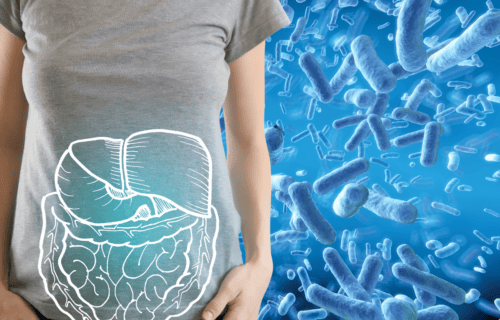
Which binders do you reccomend for fusarium? I’ve been on four GI Detox and 2 Mycopuls since April/May and started anti-fungals in June and my recent urine test showed Gliotoxin only went down from 563 to 477 and Fusarium only went down 0.04 from 23.04 to 23. I’m going to incorporate NAC next and am considering Cholestyramine next. I was also planning on attacking SIBO next, but not sure since I still have these molds. Glyphosate has gone down from 7.79 to 5.90 and BPA has gone down tremendously.
Which binders do you reccomend for fusarium? I’ve been on four GI Detox and 2 Mycopuls since April/May and started anti-fungals (Nystatin) in June. My recent urine test showed Gliotoxin only went down from 563 to 477 and Fusarium only went down 0.04 from 23.04 to 23. I’m going to incorporate NAC next and am considering Cholestyramine next. I was also planning on attacking SIBO next, but not sure since I still have these molds. Glyphosate has gone down from 7.79 to 5.90 and BPA has gone down tremendously. I feel disheartened that I haven’t detoxed mold much in 4-5 months.